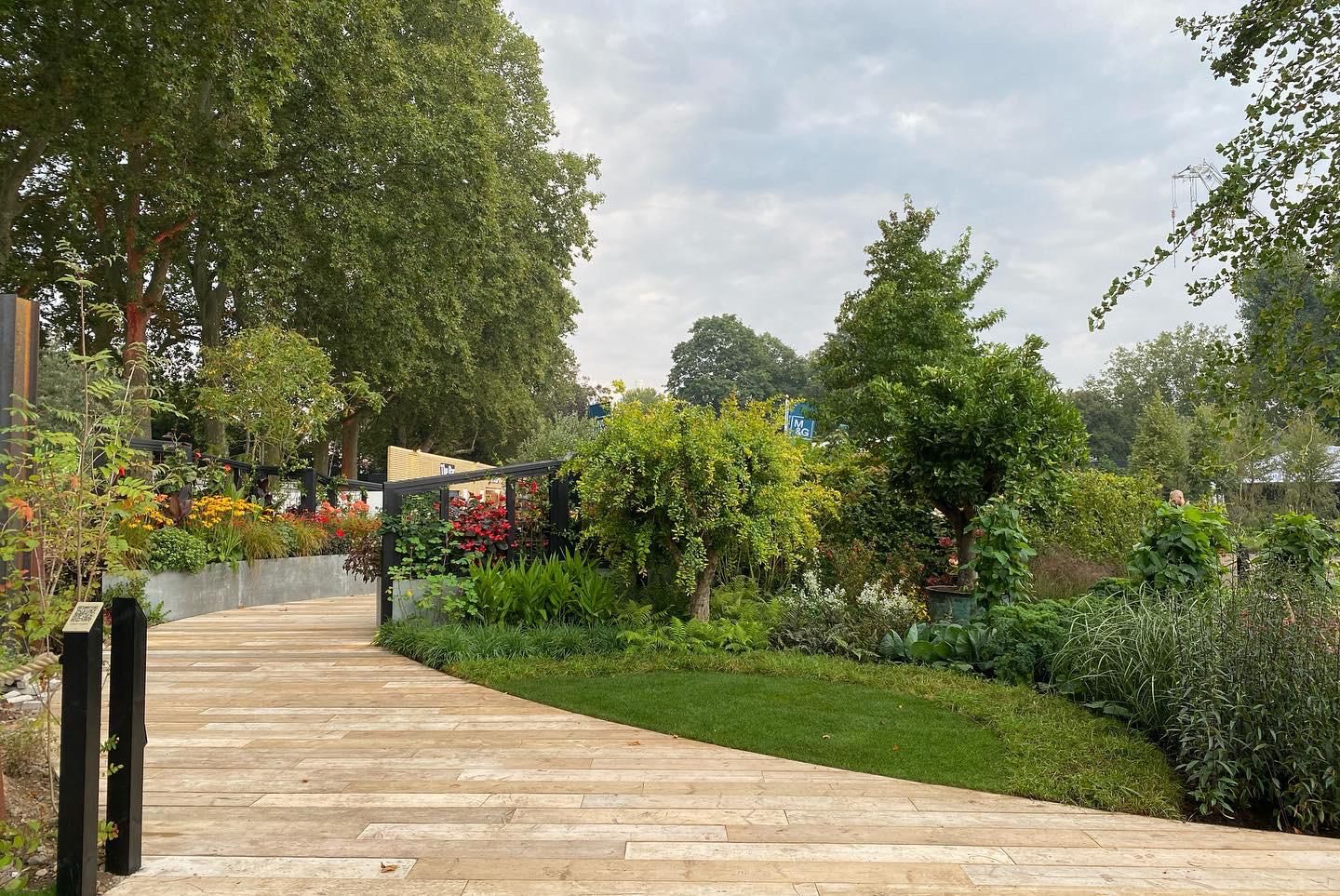We all just want our timber to last as long as possible
One of the most common questions when it comes to purchasing scaffold boards or pallet wood for either the home or garden, is how best to treat and protect it. We wrote an article a while back on which products we prefer for indoor use, but for outdoor use it's a little different, as the timber is subjected to two main elements that will inevitably age the wood no matter what you do - UV and moisture.
One option of course is just to let the wood age naturally. Most types of timber will age to a silvery grey, which can actually look very striking. Even when you do protect the wood, this will eventually happen anyway, as no treatment is 100% effective and most of us don't re-treat timber as regularly as we should, leaving windows of time where the protection on the timber is substantially less. However, people generally like to keep the original appearance of the timber for as long as possible and protect it from other types of degradation including mould and insects too, which is why some sort of treatment is usually required.
What are the main options?
There are dozens of different products out there on the market. They vary from oils, to varnishes, to paints. We'll run through a few of the main options below.
Paints and Varnishes
These tend to be more of a protective coating than something that absorbs into the wood. Paints and varnishes will sit on the top of the timber and completely seal it to form a solid waterproof and UV resistant layer, which will usually mostly or completely cover the appearance and grain of the timber. If you like the appearance of the timber you have, then it's best to avoid these. However if you have damaged or old timber, perhaps old scaffold board planters which are very weathered, then this can be a really effective way to seal the wood and keep it going for many years more, whilst transforming it's appearance.
The downsides of these are that they can chip or crack, either when knocked or scuffed, or as a result of the timber moving or swelling/shrinking, as well as gradual UV damage to the paint or varnish itself. Once the covering is damaged, raw wood is usually exposed beneath, meaning a weak point is created for further degradation. It is therefore important to get a good coverage initially and to re-paint every one or two years as necessary.
Traditional Oils
These oils are ones that have been used for hundreds of years in their pure form, such as linseed oil or tung oil. As oils, they will absorb in to the wood, giving a more full protection which won't be scuffed of chipped away. They're also natural products, meaning less environmental damage as well as being more pleasant to apply.
Here, the downsides can be in the application and maintenance. There is usually more of a process in applying these types of oils, otherwise the result can be a poor or sticky coverage. They also can take a long time to dry as they do not contain the additional drying agents other oils and paints will have. They may need to be reapplied more frequently, again due to the lack of additional chemicals to make them last longer.
Danish Oil or Osmo Oils
These options are our favourites. They are both oil mixes, usually including the traditional oils along with other substances to make them easier to apply, dry more quickly, and be more durable and therefore require fewer repeat applications.
At The Scaff Shop we're big fans of danish oil. It's fairly cheap, very easy to apply with just a brush or cloth, and it penetrates very deep into the wood. The deeper penetration results in a very durable finish which is resistant to scuffs and other physical damage. The price also means that you can be fairly liberal with the usage, which makes it easier to get really good coverage, and cheap to reapply when this becomes necessary.
Danish oil can also be purchased in many different colour stains, meaning that you can keep the timber looking it's natural and original tone, or you can stain it to look like a different type altogether.
Osmo oils are another oil mix and are considered a premium product (Osmo is a brand). You will pay more for these products, but they are considered to be very effective, due to the proprietary blend of oils in each product as well as the fact that they tailor their range of products to specific requirements or stages needed in protecting the wood. For example, a water resistant base coat which then be over-coated with a UV resistant oil, and end grains finished with an end grain sealer. As such, they offer a really comprehensive range of products and is why they are very popular among carpenters and woodworkers. We recommend visiting a site like Wood Finishes Direct to have a look at the whole range and to read more about why and when you would use each product.
Can I revive old timber?
What happens if I'm trying to revive old timber, can this be done? The answer is yes and no - timber which has weathered has in effect had it's composition changed by UV and moisture, and this cannot be undone. However, there are ways with which the wood can be 'revived' to some extent.
The first option is to give the timber a blast with a pressure washer. A lot of what can seem to be weathering is in fact a build up of dirt and debris. Washing this off may reveal a much nicer looking surface underneath. Just be sure not to damage the wood and perhaps test on a discreet area first.
Another option is to use a product designed for specifically for reviving timber, and again I refer to Osmo, who offer a Reviver Gel, which from what we have heard is very effective. To be honest I'm not quite sure what actually happens to the timber when applied, as the product does not seem particularly harsh, however it does seem to effectively bring back the timber to a certain extent, which will refresh it and prolong it's life. Again we suggest testing on a small area first and considering re-applying protective oils afterwards.
There is no "right" answer.
Protecting and treating outdoor wood is unfortunately like many things, a bit of a grey area where you'll get a lot of different opinions from a lot of different people. In truth, there unfortunately doesn't seem to be one method or product which will 100% protect timber, or protect without changing the appearance of the timber. So for all options it's a case of weighing up the various cost, time, and other factors before choosing the one most suitable for you. Many places offer sample pots of products so it may be worth choosing two or three options first and then testing them on an offcut or hidden piece of timber to see which you feel looks, feels, and reacts the best (for example you can spray water on the timber after and see if it beads, meaning that the wood has become water resistant).
The good news is that timber is forgiving
The best thing about timber is how forgiving it is. With most finishes, if you change your mind then the worst you would have to do is sand it back a little and re-apply a preferred finish. Or perhaps you've oiled some boards but decided you would rather paint? Just key them off (sand then so no longer completely smooth), perhaps consider a wood primer, and then get painting. Timber can always be transformed with a bit of sanding and some TLC. It's why we love it so much!

